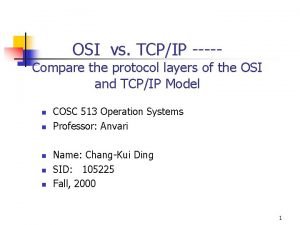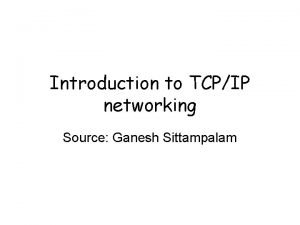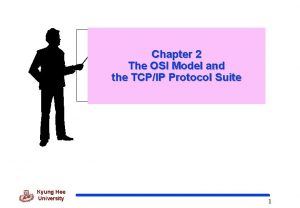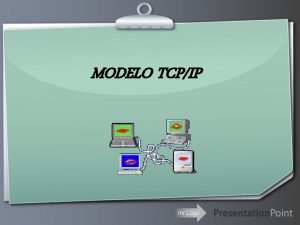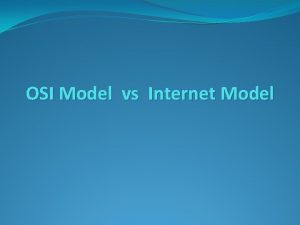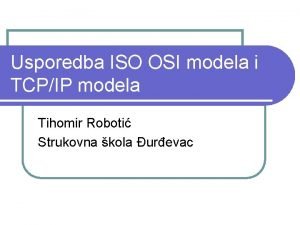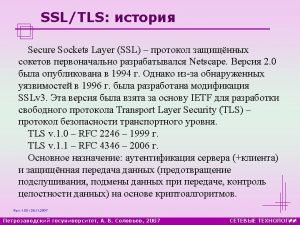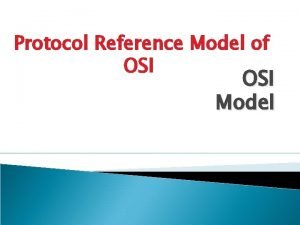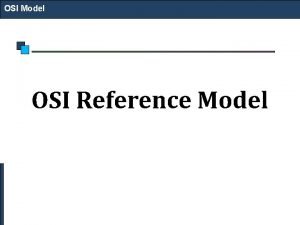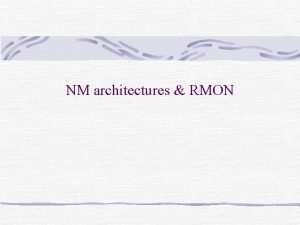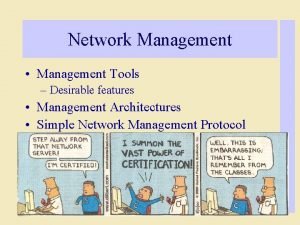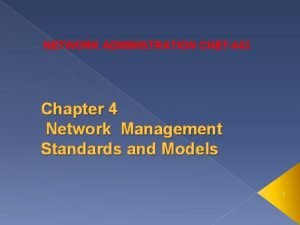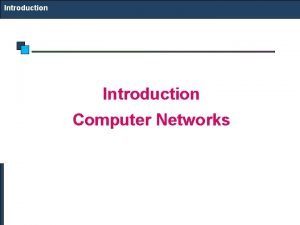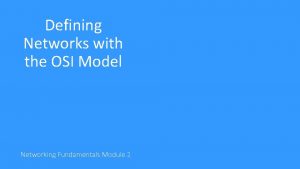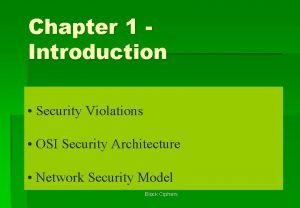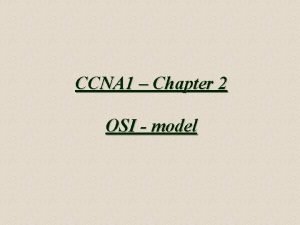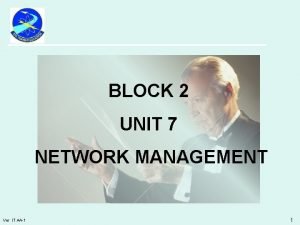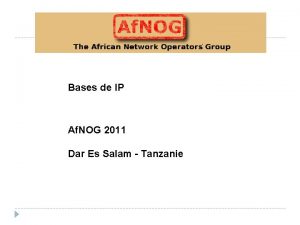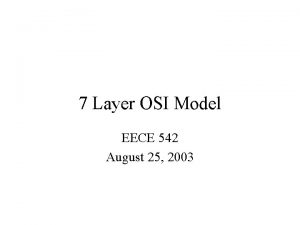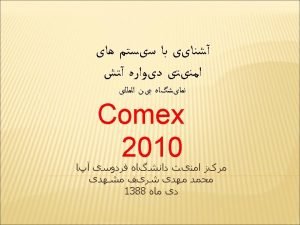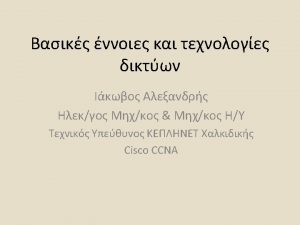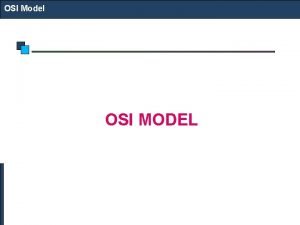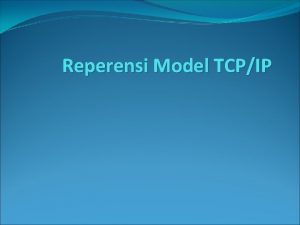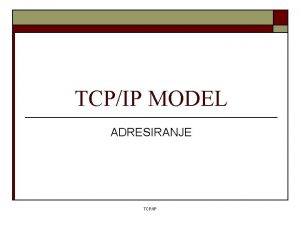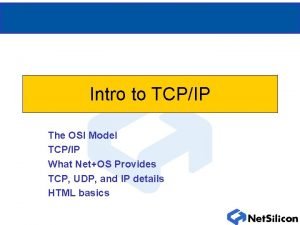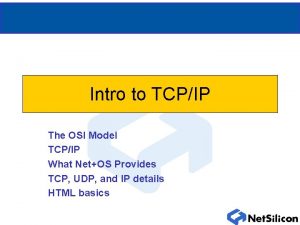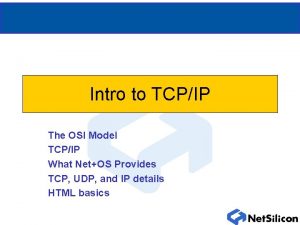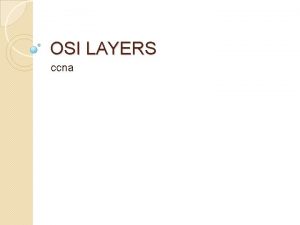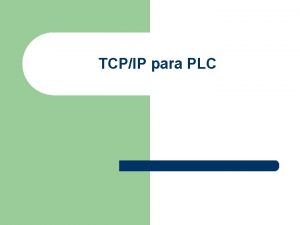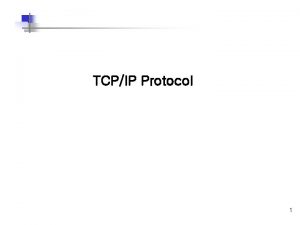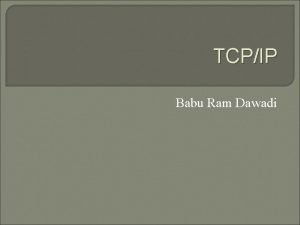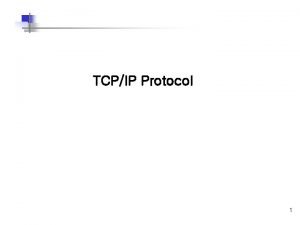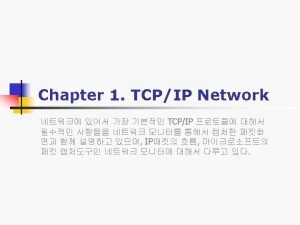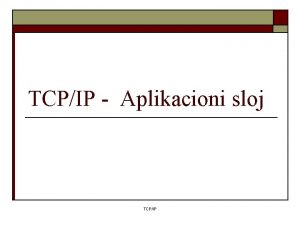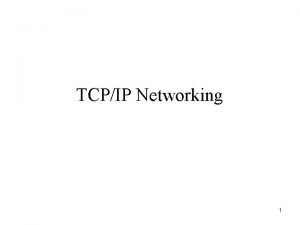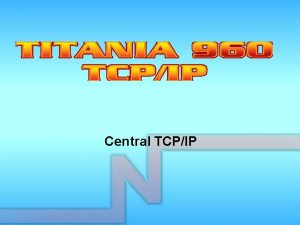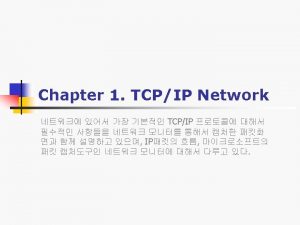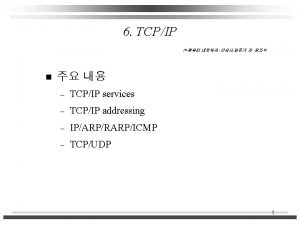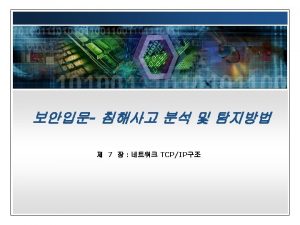TOPIC OSI model vs TCPIP MODEL OSI Model



























- Slides: 27

TOPIC OSI model vs. TCP/IP MODEL

OSI Model • Introduction ü The Open Systems Interconnection (OSI) model is a reference tool for understanding data communications between any two networked systems. ü There also some benefits of OSI Model.

Seven Layers

The Physical Layer • Physical Layer is responsible for transmitting raw bit stream over the physical cable. • Functions: o Data encoding o Transmission technique o Physical medium transmission


Data link Layer • Data link layer is responsible for controlling the error between adjacent nodes and transfer the frames to other computer via physical layer. • Functions: o Link establishment and termination o Frame traffic control o Frame acknowledgment


The Network Layer • This layer is responsible for translating the logical network address and names into their physical address. • Functions : o Subnet traffic control o Logical-physical address mapping o Frame fragmentation


The Transport Layer • This layer is responsible for end-to-end delivers of messages between the networked hosts • Functions: o Message segmentation o Message acknowledgment o Session multiplexing


The Session Layer • This layer is responsible for establishing the process-to-process communication between the hosts in the network. • Functions: o Session establishment, maintenance and termination o Session support


The Presentation Layer • The Presentation layer is responsible for protocol conversion, date encryption/decryption, Expanding graphics command the date compression. • Functions: o Character code translation o Data conversion o Data compression


The Application Layer • The application layer provider different services to the application. • Functions: o Remote file access o Electronic messaging o Directory services o Network management


TCP/IP Model • TCP/IP are two protocols of this model. TCP stands for Transmission Control Protocol and IP stands for Internet Protocol. • There are 4 Layers in TCP/IP Model.


Application Layer • The Application Layer in TCP/IP groups the functions of OSI Application, Presentation Layer and Session Layer. • Functions: o Refers to standard network services o Also defines compatible representation of all data

Transport Layer • In TCP/IP architecture, there are two Transport Layer protocols. The Transmission Control Protocol (TCP) guarantees information transmission • Functions: o Manages the transfer of data o Manages the connections between networked applications

Internet Layer • The Internet Protocol (IP) is the primary protocol in the TCP/IP Network Layer. • Functions: o Manages addressing of packets and delivery of packets between networks o Fragments packets so that they can be dealt with by lower level layer

Network Layer • In the TCP/IP architecture, the Data Link Layer and Physical Layer are normally grouped together to become the Network Access layer • Functions: o Delivers data via physical link o Provides error detection and packet framing

OSI Model vs. TCP/IP Model • The OSI model consists of 7 architectural layers whereas the TCP/IP only has 4 layers. • OSI is a reference model and TCP/IP is an implementation of OSI model. • The OSI model however is a "generic, protocol-independent standard.


Sr. No. TCP/IP Reference Model OSI Reference Model 1 Defined after the advent of Internet. Defined before advent of internet. 2 Service interface and protocols were not clearly distinguished before Service interface and protocols are clearly distinguished 3 TCP/IP supports Internet working not supported 4 Loosely layered Strict layering 5 Protocol Dependant standard Protocol independent standard 6 More Credible Less Credible 7 TCP reliably delivers packets, IP does not reliably deliver packets All packets are reliably delivered

THANK YOU
 Osi vs tcp ip
Osi vs tcp ip Ganesh sittampalam
Ganesh sittampalam Tcpip model
Tcpip model History of osi model
History of osi model Tcpip
Tcpip Modelo tcpip
Modelo tcpip Protocolo tcpip
Protocolo tcpip Tcp/ip logo
Tcp/ip logo Clueing topic sentence
Clueing topic sentence Research problem example for students
Research problem example for students Osi model vs internet model
Osi model vs internet model Aplikacijski sloj
Aplikacijski sloj Tls osi layer
Tls osi layer Snmp model in computer networks
Snmp model in computer networks Conclusion of osi model
Conclusion of osi model Osi model
Osi model Osi network management model
Osi network management model Nms architecture
Nms architecture Network management model
Network management model Network management standards
Network management standards Model iso osi
Model iso osi Encapsulation and decapsulation in osi model
Encapsulation and decapsulation in osi model Which layer of the osi model includes vlans?
Which layer of the osi model includes vlans? Osi security model
Osi security model Osi model ccna
Osi model ccna Imon internet outage
Imon internet outage Encapsulation decapsulation osi model
Encapsulation decapsulation osi model Service point addressing
Service point addressing
